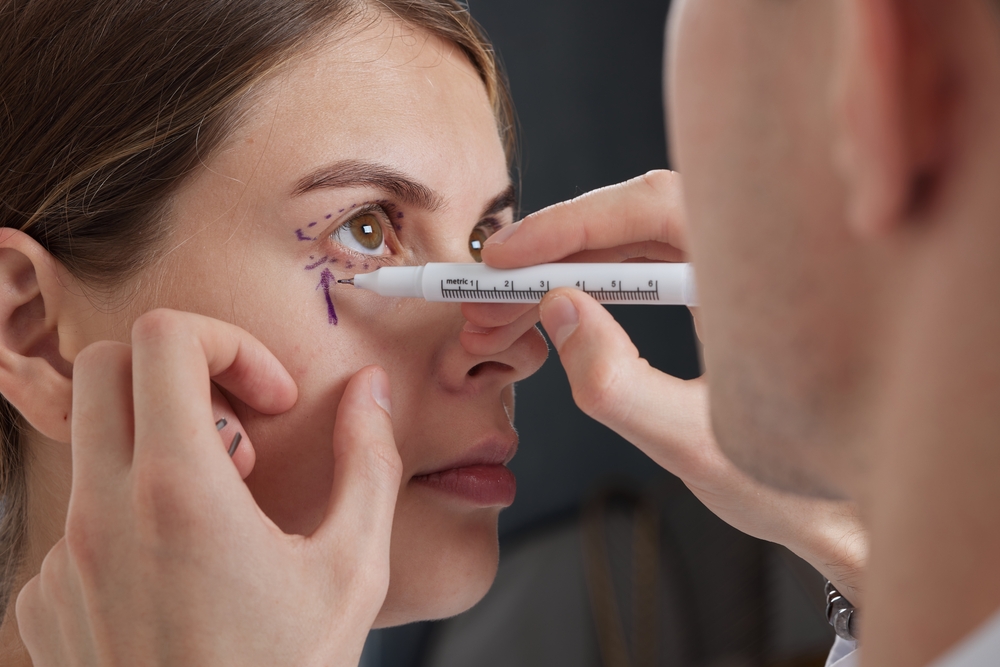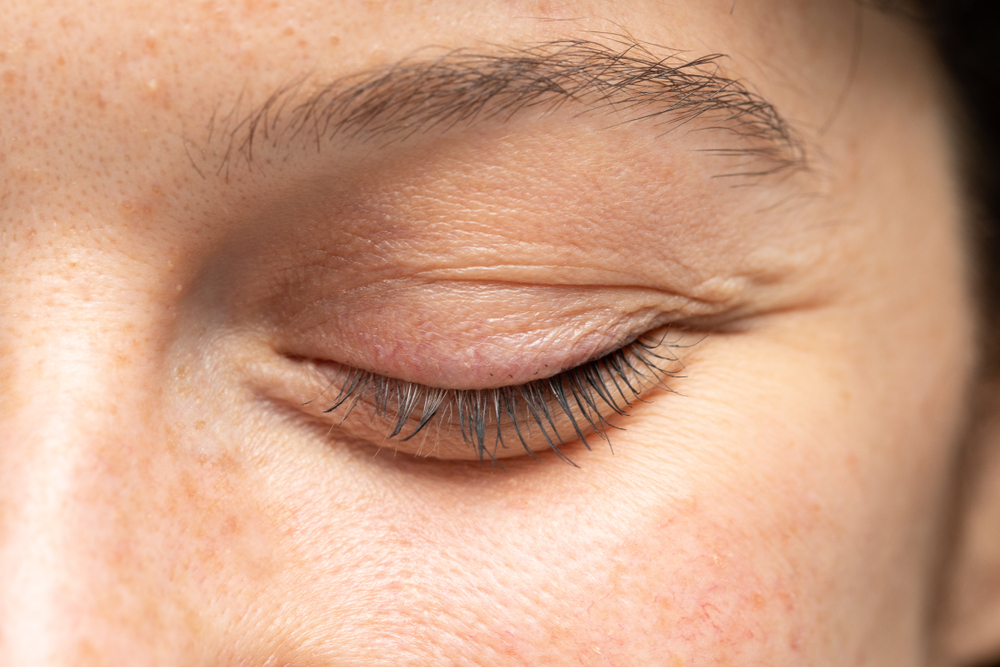What is Blepharoplasty?
March 26, 2024
One of the first places your age begins to show on your face is around your eyes. As you age, the delicate skin around your eyes begins to lose its natural elasticity, causing it to thin, sag or droop, and develop fine lines.
The effects of aging on your eyes can not only make you appear older than you feel, it can also affect the clarity of your vision. Dramatically sagging skin can begin to cover your pupils, impairing your vision.
A blepharoplasty procedure is the best way to tighten sagging skin and restore the appearance of your eye area. Blepharoplasty surgery can lift and tighten the skin around your eyes, giving them a tighter, brighter, and more youthful appearance.
Keep reading to learn more about blepharoplasty, including what it is and what happens during the procedure!
What is a Blepharoplasty?
Blepharoplasty, which is sometimes also called an eyelid lift, is a procedure that removes excess skin, muscle, and fat from the eyelids. While it is one of the most requested elective cosmetic procedures in the US, it can also improve vision that may have become impaired by sagging skin, a condition known as ptosis.
A blepharoplasty can be performed on the upper eyelid, the lower eyelid, or both. An upper blepharoplasty is often used to correct droopy eyelids, while a lower blepharoplasty is usually performed to correct puffiness or bagginess under the eyes.
Upper Eyelid Blepharoplasty
An upper blepharoplasty reduces the drooping skin that may be affecting the appearance of your eyes or limiting the full range of your vision. During an upper blepharoplasty, an eye surgeon trims sagging skin and muscles and removes excess fat deposits.
Lower Eyelid Blepharoplasty
A lower blepharoplasty improves the appearance of bulging or bloated skin underneath the lower lid, creating a flatter, smoother look. It can also help address loose skin sagging below the eyes and the fine wrinkles that appear with age.
How Can Drooping Eyelids Affect My Eyesight?
Severe drooping of the upper eyelids can limit your full range of vision, especially on the upper and outer sections of your peripheral vision. A blepharoplasty is an excellent treatment option to correct excess skin or fat that causes the eyelids to droop.
However, for some people, the cause of their eyelid drooping is due to laxity in the eyelid muscle. This is called ptosis.
Ptosis is corrected through a different procedure known as ptosis repair. Like excess skin and fat, which can weigh your eyelid down and cause drooping, ptosis can also interfere with your vision.
If you feel like your vision is affected by droopy upper lids, it's best to schedule a consultation to determine which procedure can help improve your eyelid positioning.
What Happens During a Blepharoplasty Procedure?
If you are scheduled to undergo a blepharoplasty surgery, for either cosmetic or medical reasons, you may wonder what happens during the procedure. Here is a general overview of what to expect:
Preparing for the Procedure
The first step in the actual blepharoplasty procedure is to numb the treatment area with local anesthetic. This ensures that you are comfortable during the procedure.
 The Procedure
The Procedure
During the blepharoplasty, your eye surgeon will make precise incisions along the natural creases of your eyelids. They will then carefully trim or remove excess skin, fat, and muscles, depending on your individual needs and desired results.
Closure
Once your surgeon has made the necessary eyelid adjustments, the incisions are closed with delicate stitches. These stitches are carefully placed to minimize any visible scarring and will dissolve on their own.
After the Procedure
Following your blepharoplasty procedure, you may be monitored in a recovery area for a while before being sent home. Before going home, your eyes will be covered with protective ointment and bandages.
You will need someone to drive you home, so be sure to prepare for that in advance.
Recovery
After the blepharoplasty procedure, you should allow yourself several days to rest. You may experience mild discomfort, swelling, bruising, or temporarily blurred vision, but these symptoms should eventually subside on their own, usually within a few days or weeks.
Care During Recovery
Your eye surgeon will provide detailed instructions on how to best care for your eyes during recovery. These instructions typically include applying cold compresses to reduce swelling, bruising, and discomfort, prescription ointments or eye drops, and avoiding activities that may strain your eyes, such as reading or looking at an electronic screen for extended periods of time.
Follow-up
Once your eyes have fully healed from the procedure, you will have a follow-up appointment with your eye surgeon to discuss the results.
Interested in learning if you may be a candidate for blepharoplasty?
How Long Do the Effects of Blepharoplasty Last?
The lasting results of a blepharoplasty procedure can vary. While most people can expect to experience the effects of the blepharoplasty procedure for years ahead, others may need a touch-up procedure in the future.
You can help maintain the results of blepharoplasty by protecting your eyes and eye area with protective sunglasses and eye-safe sunscreen, staying hydrated to promote skin health, and eating a diet rich in vitamin C and proteins, which specifically provide nourishment to your skin.
If the effects of aging have taken their toll, a blepharoplasty procedure can restore the youthful appearance of your eyes. Whether you would like your eyes to look brighter and more alert or you want to restore your impaired vision, eyelid surgery could be the right choice for you!
Do you want to learn more about blepharoplasty or determine if this procedure might be right for you? Schedule a consultation today with one of the experienced eye surgeons at Advanced Eye Care in Bel Air, MD, today!



